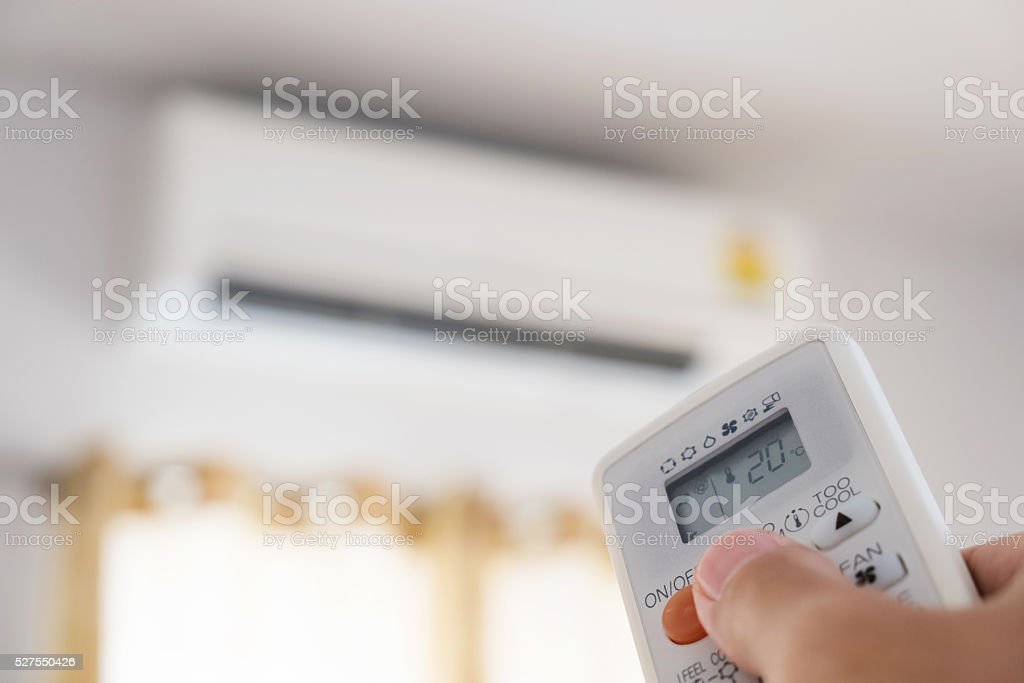You probably consider energy efficiency, air quality, and cooling speed when you shop for an air conditioner. The features of the air conditioner’s remote control are one of those things that most people never even think to use. However, once you’ve unboxed and set up the air conditioner, you might find yourself perplexed as to how to operate it.
You may have first looked at the remote control and thought that the symbols on it were simple to interpret. However, misunderstandings can restrict your ability to take advantage of your air conditioner’s features. In order to help you better grasp the remote control symbols, we’ll share with you the different modes of remote control.
Your AC Remote Control’s Modes:
Nearly all air conditioner manufacturers offer these popular or standard modes. However, it should be noted that the AC modes greatly rely on the air conditioning company. Here are a few typical ones that you should be aware of and employ to your advantage.
- Cool Mode:
Many of us imagine air conditioners in this type of mode. Activating this setting triggers the air conditioner to start blowing chilly air across the room. When the set point temperature is reached, the air conditioner’s internal temperature sensor turns off the compressor and leaves the fan to circulate the air.
This setting on your air conditioner’s remote control uses the most power. The longer the compressor operates, the lower the temperature is kept.
- Fan Mode:
Air conditioners have an inbuilt fan that may be used to circulate air throughout a room when the fan setting is selected. This is done without using any sort of cooling mechanism, just like a regular fan.
Because the compressor is not running, air conditioners in fan mode use significantly less power. It does not really cool the air, but rather blasts or circulates it.
- Dry Mode:
The dry mode on your air conditioner is something you are quite familiar with if you live in a humid climate. This is the mode you want to be in when the humidity is high but the temperature is bearable, and sweat is beading down your forehead.
In dry mode, the air conditioner will turn on and off at brief intervals to remove excess moisture from the air. The fan is on all the time, but it’s set to a very slow speed. When the air conditioner’s humidity sensor detects that the relative humidity in the room has dropped to a certain point, the compressor will shut off.
AC can also get damaged over time so having proper maintainance is necessary. Visit https://www.socool.sg/ for any problem related to your AC like Aircon Leaking so that it can last for years to come.
- ECO Mode:
This is arguably the best setting for your air conditioner. It’s a standard feature on most new AC units. This mode works by controlling the air conditioner’s compressor and fan speed to use as little energy as possible.
When that temperature is reached, your air conditioner’s compressor will shut off, but the fan will keep running to keep the space at that temperature. The entire process uses relatively little power.
- Heat Mode:
This setting is a backwards adaptation of the “cool” mode. When the heat setting is activated, hot air is pumped into the room instead of being expelled. However, chilly air is released into the atmosphere. This is the mechanism through which the conventional direction of airflow is turned on its head.
Both hot and cold air are supplied by the compressor. This setting is ideal for the winter months, and it may safely replace a gas heater in your home.
- Turbo Mode:
When switched to this mode, everything goes in the opposite direction from the ECO setting. It puts up its maximum effort all at once to reach the set temperature as quickly as feasible. When the inverter’s compressor and fan are both running at full speed, it draws the maximum amount of power. Jet or power mode are other names for this setting.
If you want to get to your preferred temperature rapidly in extremely cold or hot weather, turbo mode is the way to go.
- Self-Clean Mode:
Using your air conditioner on a regular basis might cause it to collect dirt, which could release potentially deadly bacteria into the air. By removing moisture from the inside of your HVAC unit, the self-cleaning or auto-clean mode prevents the development of airborne bacteria. This is more practical in humid environments.
The AC evaporator is cleaned and dried, ready for use again. You can rest easy knowing that the air you and your family are breathing is healthy thanks to the HVAC system’s self-cleaning feature. You can use the self-clean function with the cool and dry settings, and on some models, the hot setting as well.
The air conditioner will operate for roughly 30 minutes after you turn it on, and then it will switch off by itself.

